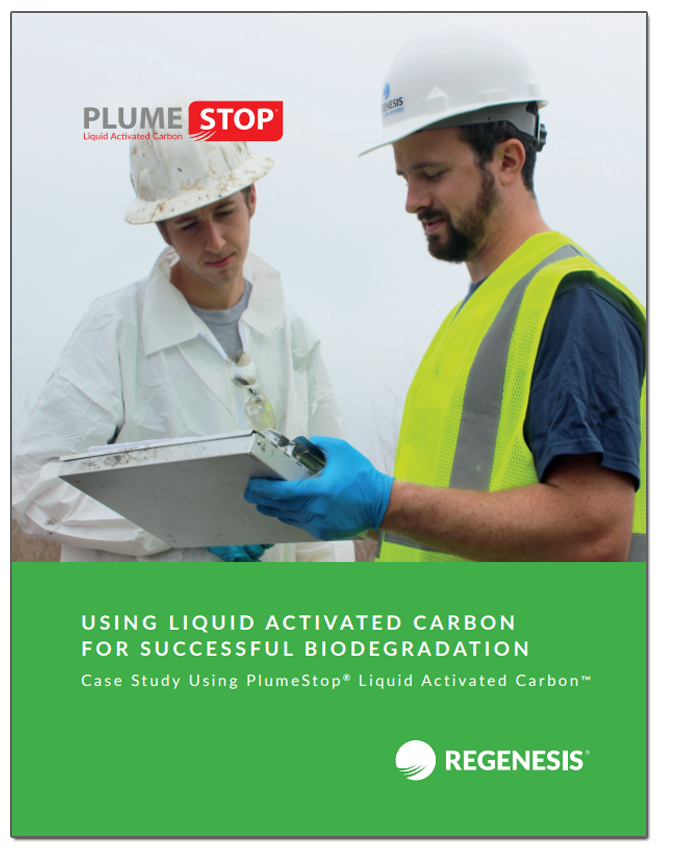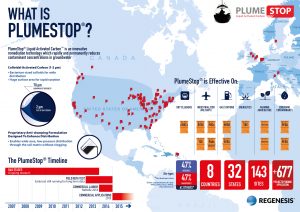
This case study reviews a challenging site encompassing approximately 60 acres in rural South Carolina where a remedial facility assessment (RFA) identified 44 solid waste management units (SWMUs) and three areas of concern (AOCs). The overall project effort spanned some 20 years. The recent remedial objective focused on reducing contaminant concentrations within the downgradient plume and limiting further migration.
PlumeStop Liquid Activated Carbon was used in both the pilot test and full-scale application to successfully treat the downgradient portion of a long, narrow cVOC plume. A pilot test was followed by a full-scale implementation and resulted in contaminant reductions ranging from 98% to 100% within the zone of influence. Details of the remedial design approach are provided along with verified remedial outcomes. Download the full case study to learn why PlumeStop Liquid Activated Carbon was selected; the remediation design process from pre-remedial, to pilot and full-scale implementation, and performance monitoring; and remediation performance outcomes. Complete the form on this page to read the full case study.
PlumeStop Successfully Applied on Over 140 Sites and Counting
PlumeStop Liquid Activated Carbon is now a proven, reliable technology that remediation professionals are using to reach site cleanup targets faster than ever thought possible. How effective has this technology proven to be? Which contaminants does PlumeStop address? Click here to see PlumeStop’s impact to date.


 Americas
Americas Europe
Europe Français
Français Deutsch
Deutsch Italiano
Italiano Español
Español



